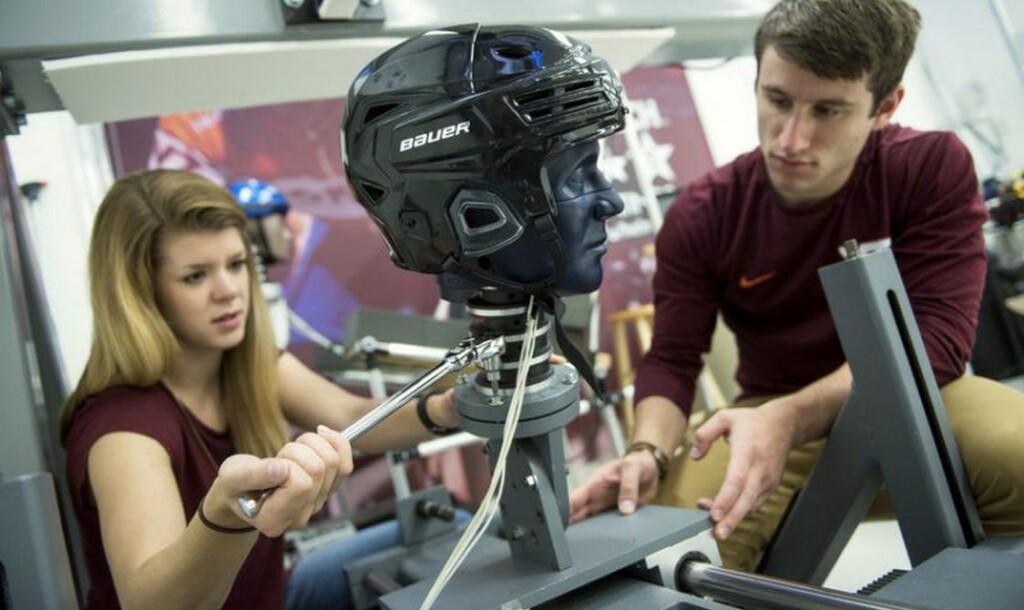Would Your Helmet Actually Protect You? Va Tech’s ‘Helmet Lab’ Is Testing Every Sport

In 2011, Steve Rowson and his fellow engineering students at Virginia Tech were asked by the Hokies equipment manager if they could test commercially-available football helmets to see which was the safest.
Obliging the man, they ran a series of impact assessments, and found a broad spectrum of differences between them.
At that moment, the institute’s “Helmet Lab” was born, and Rowson would go on to become its director. Now, he’s training the next generation of students producing the VA Tech Helmet Rating with the aim of providing consumers the unbiased information needed to make informed decisions when purchasing helmets.
Now they test all kinds of helmets: cycling helmets, football helmets, snowsport helmets, construction site hard hats, baseball helmets, hockey helmets, and equestrian helmets.
“If you think about what we first started doing, it wasn’t an original thought. You can look back to the 1970s and see the suggestion of someone saying, ‘well, we should stick sensors inside football players’ helmets so we can study head impacts,'” Rowson told CNN’s Tech for Good series, interviewing him on the Helmet Lab’s origin story.
The project became popular with just about everybody. Manufacturers were keen to get the (could one say coveted?) 5-star Helmet Lab safety rating to increase sales, parents and athletes were keen to get the most protection for their dollar, and students had the opportunity to work and study a variety of scientific disciplines in a field with extremely practical implications: the reduction in brain trauma in sports and society at large.
It’s not as obvious as throwing a crash test dummy against a wall. The Helmet Lab pays close attention to the circumstances particular to each sport. In some cases, that means the head smacking into something, while in other cases it’s something smacking into the head.
VA TECH SCIENCE: More Efficient Way to Defrost Cars Using Electricity to “Zap” Ice Without Heat
A child riding a bike will on average hit the ground at different points on the helmet compared to an adult cyclist, in an example of this difference.
Surfaces and material matter too. A football player will need protection from helmet-to-helmet hits, while a hockey player needs both protection from hitting the ice and getting whacked with a wooden stick. Ice has a different impact potential than blacktop, which will be different to snow in the case of skiing helmets, which will be different to sand in the case of horse riding.
All of this is taken into account when creating generating an official Helmet Lab rating.
The various testing machines measure linear and rotational force transmitted by the impact through the helmet and into the head. Lower levels of force detected by sensors mean less of the effects of the impact are making it through the helmet’s protective features, and result in a higher star rating.
SUPER USEFUL SCIENCE: Scientists Perfecting New Way to Turn Desert Air into Water at Much Higher Yields
“People care when you’re buying a helmet, how much protection it offers,” Rowson said. “So, when we started publicizing that information, it was like a light bulb to manufacturers: ‘safety sells’ … and we’ve seen that across just about every single area we’ve evaluated helmets in.”
WATCH the CNN segment below…






Please be good and do not spam. Thank you.